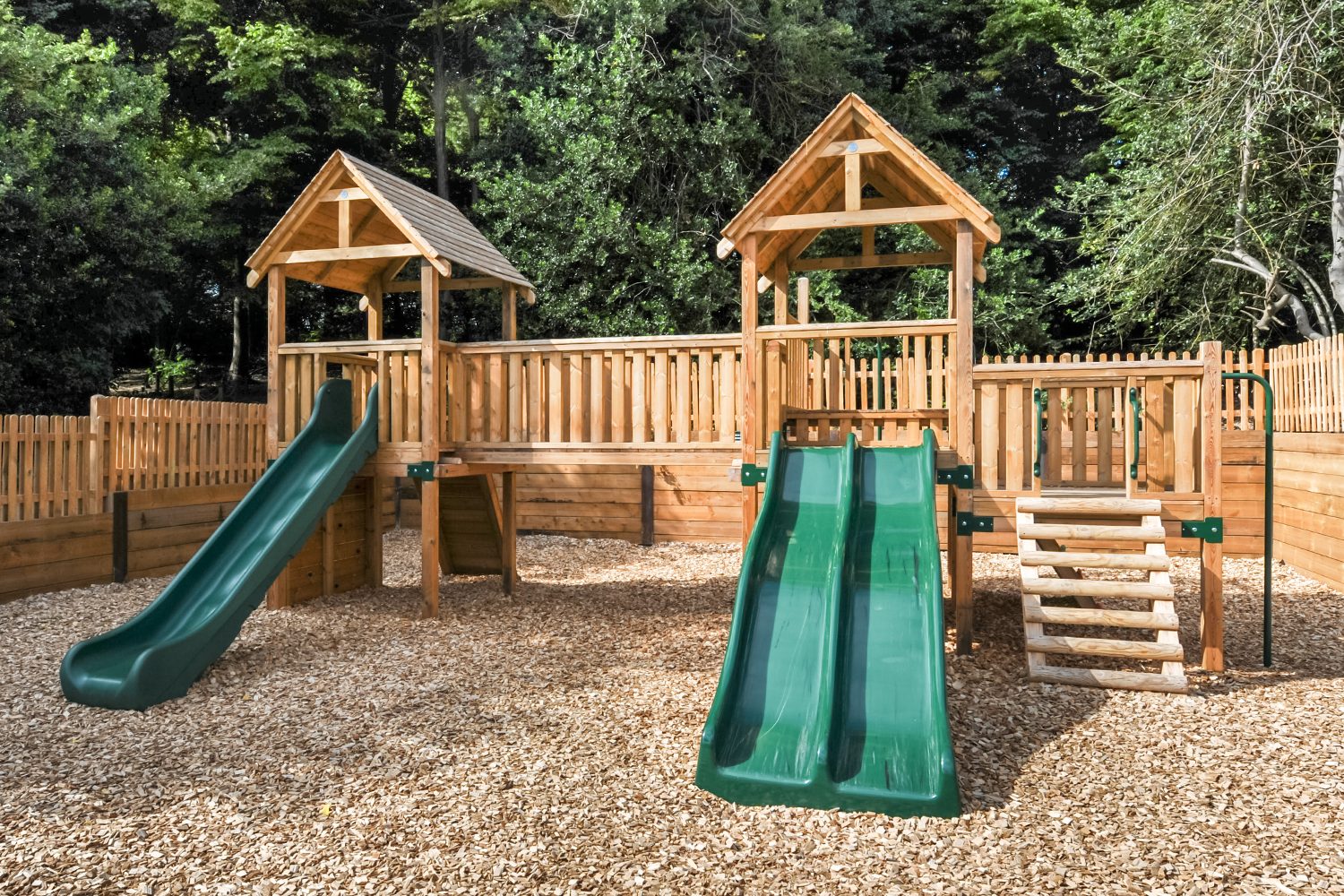Introduction
A playground is a hallmark of childhood and a critical feature of schools and communities across the UK. Its design has a profound influence on children’s health, development, and social interaction. However, creating a playground is more than just placing equipment on a plot of land. It involves a comprehensive understanding of the local climate, safety regulations, child development stages, and, most importantly, the play types that the playground is meant to encourage. This guide takes you through the process of designing play equipment for schools that is not only engaging but also safe, durable, and inclusive.
Understanding Local Climate Factors
Designing a playground that can withstand the UK’s unique climatic conditions is essential. The local weather, which ranges from cold winters to warm summers and sees frequent rainfall, influences the type of playground equipment and materials used.
Selecting durable materials can help ensure the longevity of the playground. For instance, stainless steel is highly resistant to rust, making it suitable for equipment like climbing frames and swings. High-Density Polyethylene (HDPE) plastic is another ideal choice due to its resilience against fading, cracking, and warping, making it perfect for slide surfaces and play panels. Pressure-treated timber, with its resistance to rot, can lend a natural aesthetic to the playground without sacrificing durability.
Given the frequent precipitation, drainage systems are also a key consideration to prevent waterlogging and prolong the life of the playground. Equally important are canopies or shades, which can protect the equipment from weather extremities and provide a shield against harsh sun rays during summer, as well as heavy rain or snow during winter.
Encouraging Different Types of Play
A great playground isn’t defined by the quantity of its equipment, but by how well it caters to various play types. Each play type contributes to different facets of a child’s development:
- Physical Play: This type of play fosters motor skills, coordination, and physical health. Swings, slides, climbing frames, and see-saws encourage movement and challenge children’s strength and agility. For instance, a climbing frame not only promotes physical exercise but also helps develop problem-solving skills as children navigate their way to the top.
- Imaginative Play: This form of play nurtures creativity and cognitive development. Playhouses, themed play structures (like pirate ships or castles), and sandboxes provide a backdrop for children’s narratives and role-play scenarios, allowing their imagination to flourish.
- Social Play: Structures that promote cooperative play can help improve communication skills and encourage interaction among children. Play panels with interactive features, picnic tables for shared activities, or group games like a large spinner provide opportunities for children to interact, cooperate, and learn from each other.
Choosing Equipment for Different Age Groups
One of the key aspects of an inclusive playground is its ability to cater to a diverse range of ages and abilities. Equipment should be chosen with an understanding of the target age group’s developmental stages and abilities:
- Toddlers and Pre-schoolers: At this age, children are exploring their surroundings and developing fundamental motor skills. Therefore, the play equipment should be smaller, lower to the ground, and have features like handrails for support. Lower slides, small crawl tubes, and ground-level activities such as sandboxes are ideal choices.
- School-age children: As children grow, they seek more adventurous and challenging play activities. Larger climbing frames, swings, and slides become more suitable. These pieces of equipment not only encourage physical play but also help children develop confidence, resilience, and social skills.
- Teens and Adults: While playgrounds are often associated with younger children, they should also accommodate older users. Including fitness stations, benches for relaxation, and open spaces for informal games can encourage teens and adults to use the space, fostering a sense of community and promoting physical health.
Complying with UK Playground Safety Standards
In the UK, playground safety is governed by strict standards – BS EN 1176 and BS EN 1177.
- BS EN 1176: This standard covers all aspects of playground equipment. It includes safety requirements, test methods, and instructions for installation. Compliance with BS EN 1176 ensures that the risk of accidents is minimised. For example, the standard provides guidelines on the minimum safety distances that should be maintained around equipment to prevent collisions and the maximum free heights of fall.
- BS EN 1177: This standard provides specifications for the surfacing of playgrounds. It is meant to ensure that if a child falls, the surface can absorb the impact and minimise the risk of serious injury. Depending on the critical fall height of the installed equipment, surfacing may range from grass and sand for lower equipment to rubber mulch or poured-in-place rubber for equipment with greater fall heights.
Understanding and complying with these standards is crucial in every stage of playground design, from selecting equipment to designing the layout and installing the safety surfacing.
The Design Process
Designing the perfect playground involves several key steps:
1. Planning
In the initial planning phase, identify the target age group and determine the types of play you want to encourage. Consider factors like the local climate, available space, and budget. Accessibility should also be a focus to ensure inclusivity for all users, including those with disabilities.
2. Selecting Equipment
Choose a variety of equipment that encourages different types of play and caters to the target age group. Verify that the equipment complies with BS EN 1176 and is made from materials that are durable in the UK climate.
3. Designing the Layout
The playground layout should be designed with safety and functionality in mind. There should be enough space around each piece of equipment to prevent collisions. Visibility is also important; caregivers or teachers should be able to see children at all times. In addition, consider the flow of movement around the playground to avoid congestion.
4. Installing Safety Surfacing
Choose and install an impact-absorbing surface material that complies with BS EN 1177. The type of surfacing will depend on the height of the equipment and the critical fall height.
5. Regular Maintenance and Inspection
Once the playground is complete, regular maintenance and inspections are vital to ensure its safety and longevity. Playground surfaces should be checked regularly for wear and tear, and equipment should be inspected for any signs of damage.
Conclusion
Designing the perfect playground for UK schools and communities is a task that requires careful planning, knowledge of child development, and a clear understanding of safety regulations. By carefully selecting equipment, considering the play types you wish to encourage, and regularly maintaining the playground, you can create a space that not only brings joy to its users but also aids their physical, cognitive, and social development.
 Education Today Education Today Magazine
Education Today Education Today Magazine
